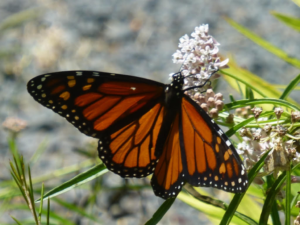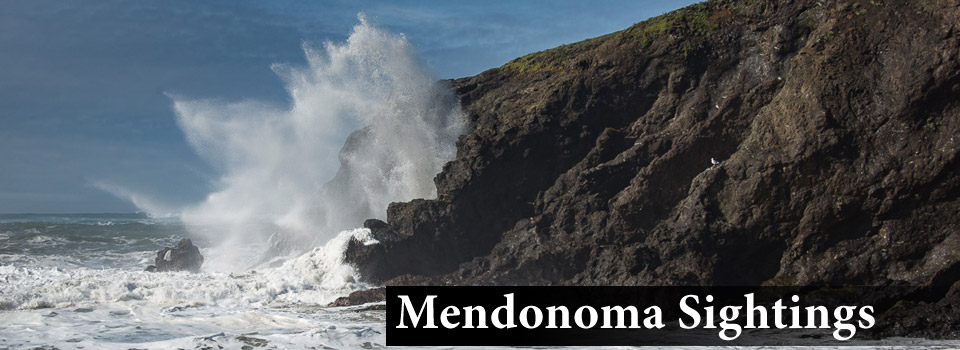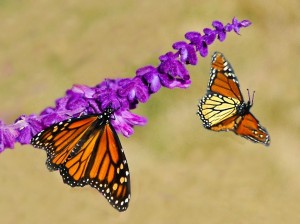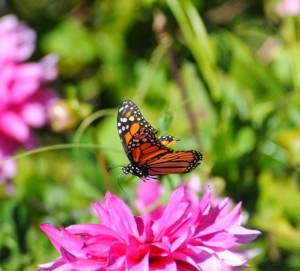Susan Zerwick photographed this beautiful Monarch Butterfly several weeks ago but no other sightings of them came in. But the past couple of days, I have been seeing Monarchs at our flowering pink abelia bush.
 And yesterday, at the Climate Conference in Gualala, I looked out the door of the Community Center and saw several Monarchs. These are the Methuselah generation, the long-lived generation. They live about seven month0.s The Monarchs we are seeing now are the ones to migrate southward.
And yesterday, at the Climate Conference in Gualala, I looked out the door of the Community Center and saw several Monarchs. These are the Methuselah generation, the long-lived generation. They live about seven month0.s The Monarchs we are seeing now are the ones to migrate southward.
Monarch Butterfly numbers are way down and we are quite worried about them. The world would be a poorer place with these beauties.
Thanks to Linda for allowing me to share her photo with you here.
Sunshine abounds on the coast today. Lots of whale spouts have been seen with the Pacific Ocean doing its best impersonation of a lake!


